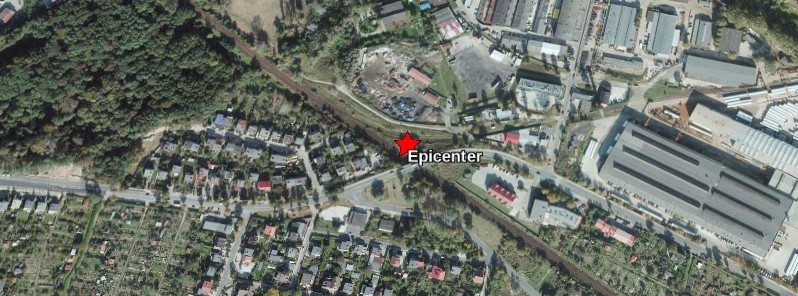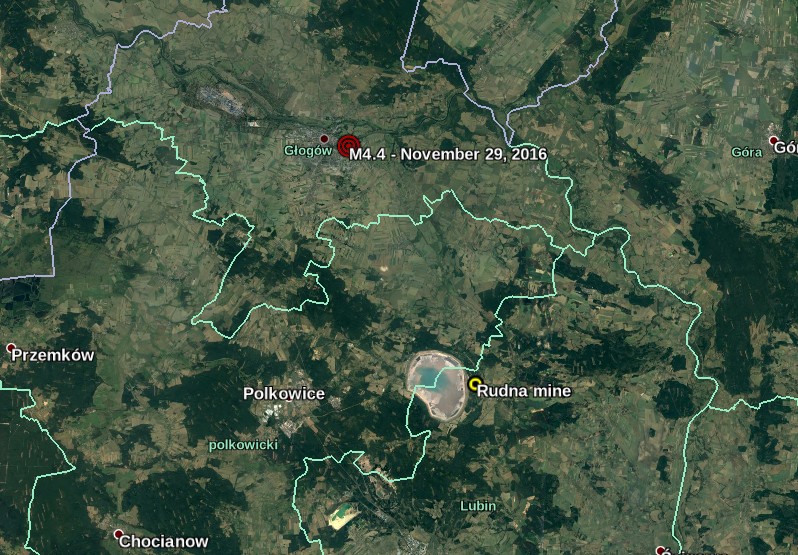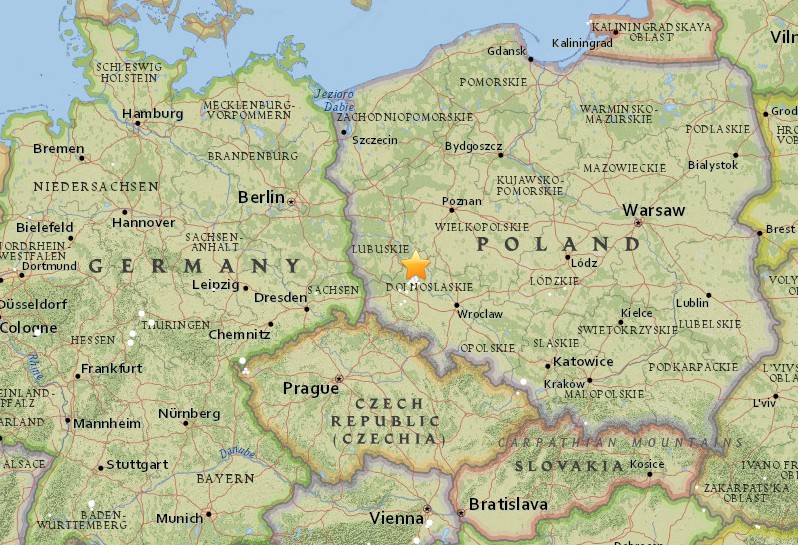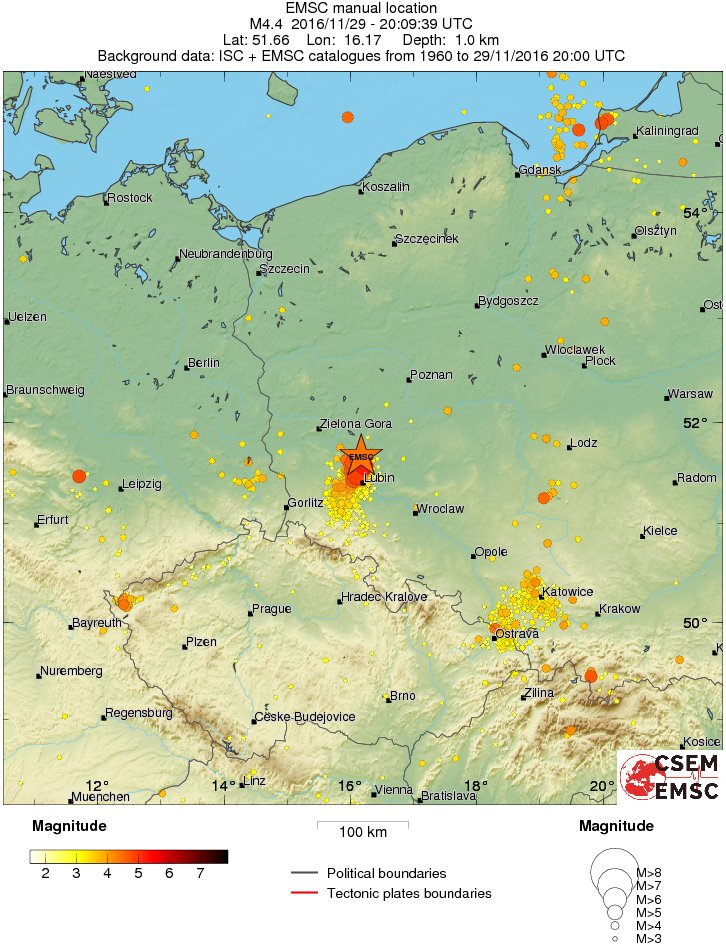8 killed after M4.4 earthquake hits near Rudna mine, Poland

A shallow earthquake registered by the USGS as M4.4 hit southwestern Poland at 20:09 UTC on November 29, 2016, killing 8 people in a nearby Rudna mine. USGS said the quake occurred at a depth of 10 km (6.2 miles). EMSC is reporting mb 4.4 at a depth of 1 km (0.62 miles).
According to the USGS, the epicenter was located 1.8 km (1.1 miles) ESE of Głogów (population 68 530), 17.4 km (10.8 miles) N of Polkowice (population 21 565), 21.8 km (13.6 miles) SW of Wschowa (population 14 458), and 29.4 km (18.3 miles) NNW of Lublin (population 77 532), Poland.
This is about 18.8 km (11.7 miles) N of state-run Rudna mine.

Rudna mine location and M4.4 earthquake on November 29, 2016. Distance 18.8 km (11.7 miles). Credit: Google

M4.4 earthquake on November 29, 2016 with historic seismicity. Credit: USGS
“There were 16 people in the danger zone. Some of them were walked out,” a spokeswoman for the company was quoted as saying by private radio RMF FM.
Among nine people evacuated, one man died, according to media reports. Rescuers also found another miner who had died underground. Three miners were in stable condition in hospital with head and back injuries, The Guardian reported.
On December 1, mine owner said 8 people have lost their lives.
Rudna is a large mine in the west of Poland, some 350 km (217 miles) SW of the capital, Warsaw.
It is one of the largest copper and silver reserve in Poland having estimated reserves of 513 million tons of ore grading 1.78% copper and 42 g/tons silver.
This is not the first incident at the mine after nearby earthquakes, although the first fatal one.
On March 20, 2013, 19 miners were pulled alive from the mine after bein trapped 1 km (0.62 miles) underground for 7 hours, following a small earthquake.
Earthquakes in this region are relatively common. They are mostly shallow, up to 40 km (24.8 miles), with magnitudes mostly between 2 and 3 and up to 5.

In 1618, two deadly earthquakes hit the region and killed more than 800 people, according to the International Handbook of Earthquake and Engineering Seismology.
Featured image credit: Google

Commenting rules and guidelines
We value the thoughts and opinions of our readers and welcome healthy discussions on our website. In order to maintain a respectful and positive community, we ask that all commenters follow these rules.